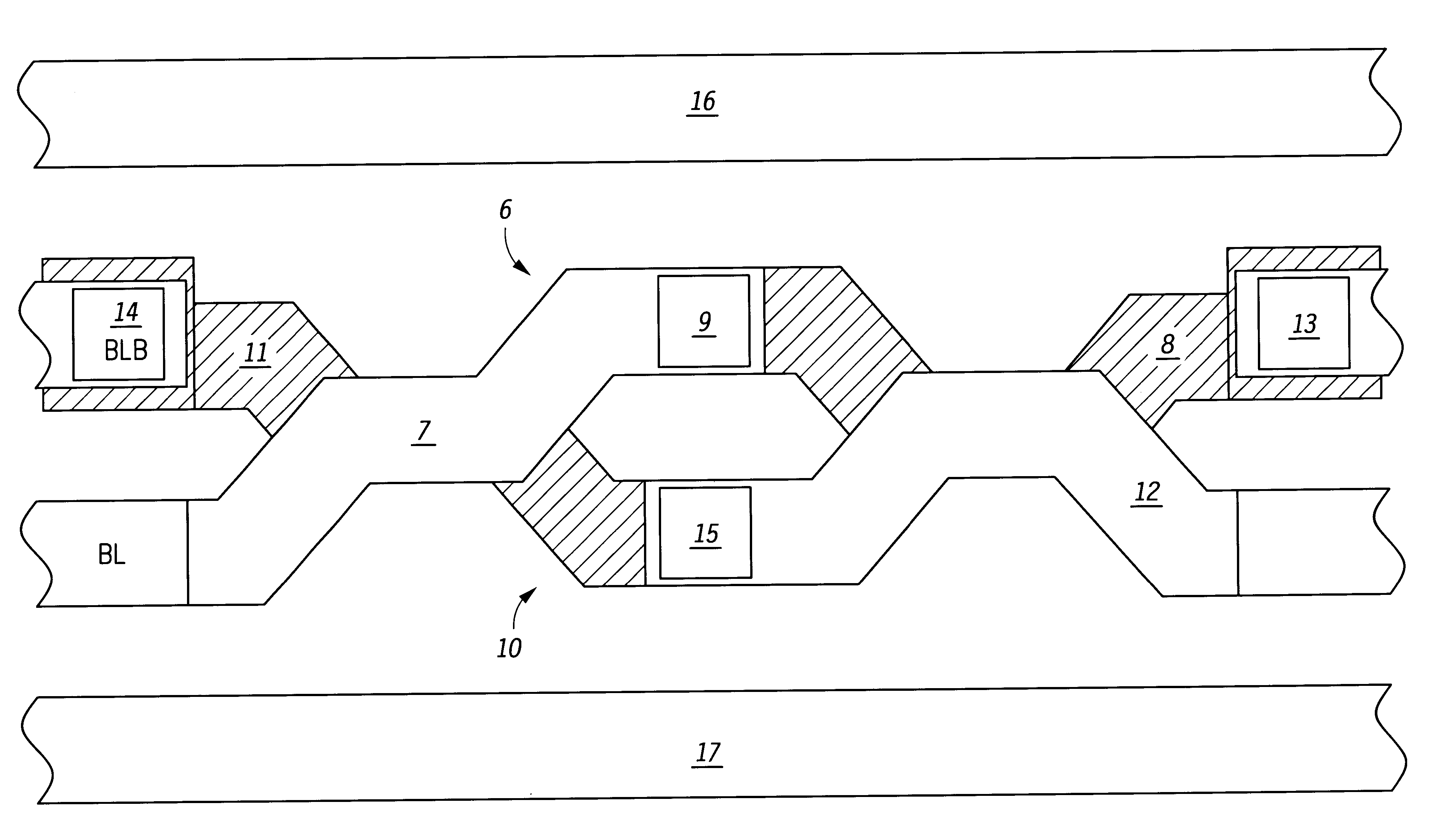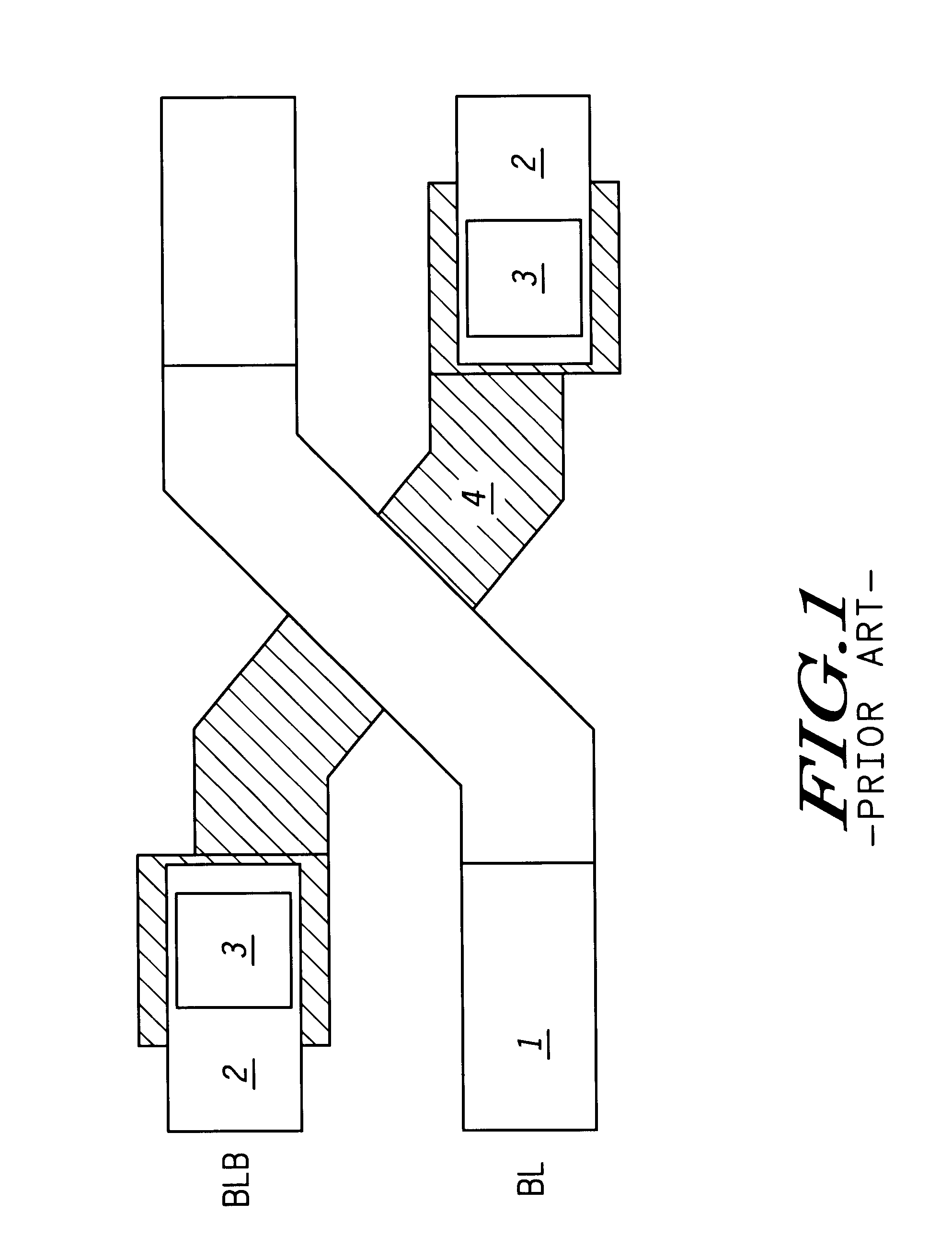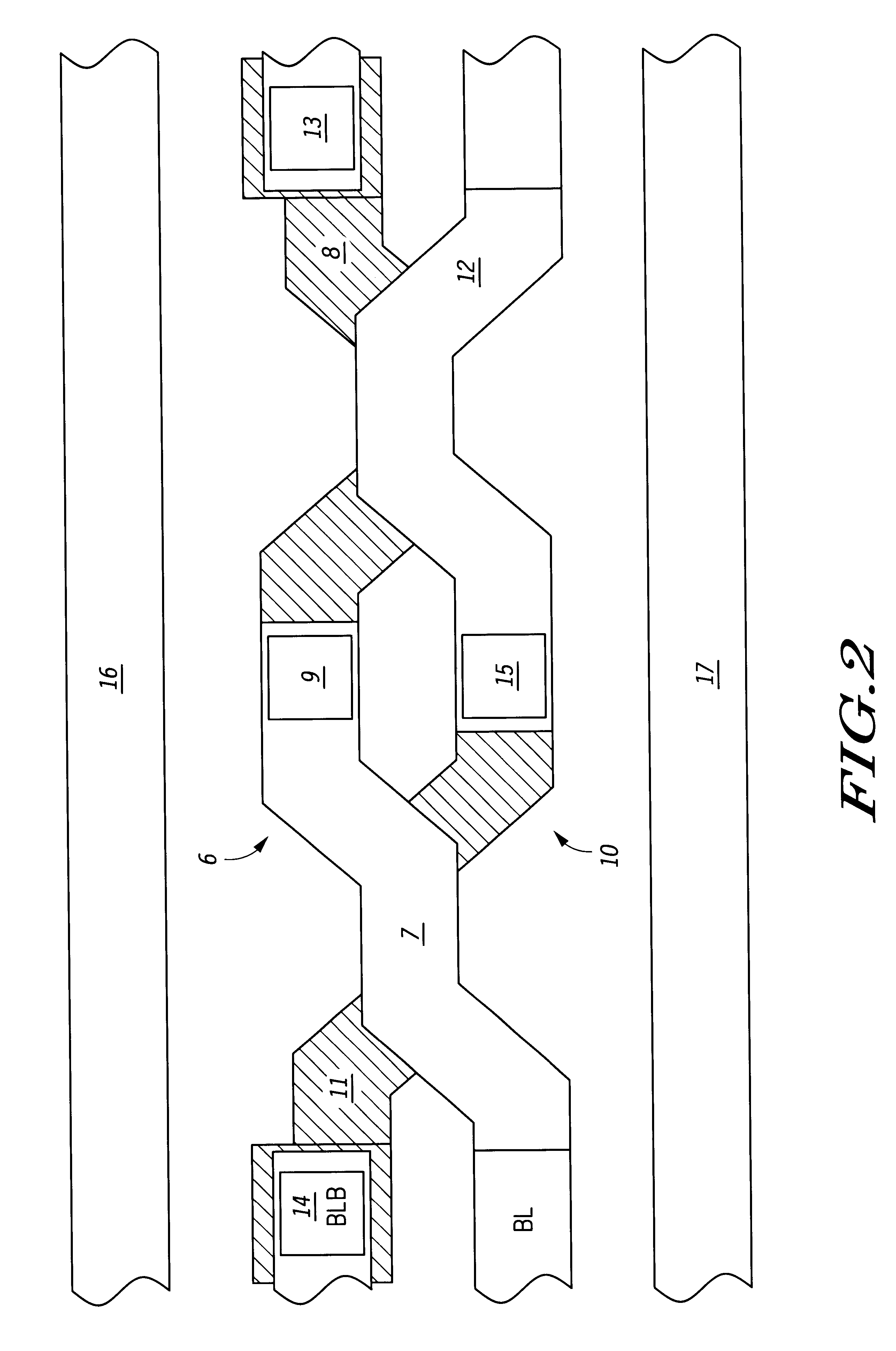Integrated circuit having a balanced twist for differential signal lines
a technology of integrated circuits and signal lines, which is applied in the direction of digital storage, semiconductor/solid-state device details, instruments, etc., can solve the problems of reducing performance, affecting the performance of pairs, and increasing the voltage differential of bit line pairs
- Summary
- Abstract
- Description
- Claims
- Application Information
AI Technical Summary
Benefits of technology
Problems solved by technology
Method used
Image
Examples
Embodiment Construction
Generally, the present invention provides for twisting differential pairs to reduce the effects of capacitive coupling and to equalize, or balance, the resistance of the differential pairs. The present invention provides a twist configuration that is balanced in terms of resistance, capacitance, and process variance. In the twist design of one embodiment of the present invention, each routing, or line, in the area of the twist passes through both layers of metal. In addition, each routing passes through the same number of vias, and may experience the same number of bends. Each routing will be exposed to the same sidewall crosstalk with adjacent lines since the length of each routing along each sidewall in the same plane is approximately the same. In some embodiments, twisting differential pairs as disclosed herein reduces signal degradation, enhances signal separation, and thus allows a higher clock speed for the integrated circuit.
FIG. 1 illustrates a prior art layout in which the ...
PUM
 Login to View More
Login to View More Abstract
Description
Claims
Application Information
 Login to View More
Login to View More - R&D
- Intellectual Property
- Life Sciences
- Materials
- Tech Scout
- Unparalleled Data Quality
- Higher Quality Content
- 60% Fewer Hallucinations
Browse by: Latest US Patents, China's latest patents, Technical Efficacy Thesaurus, Application Domain, Technology Topic, Popular Technical Reports.
© 2025 PatSnap. All rights reserved.Legal|Privacy policy|Modern Slavery Act Transparency Statement|Sitemap|About US| Contact US: help@patsnap.com



